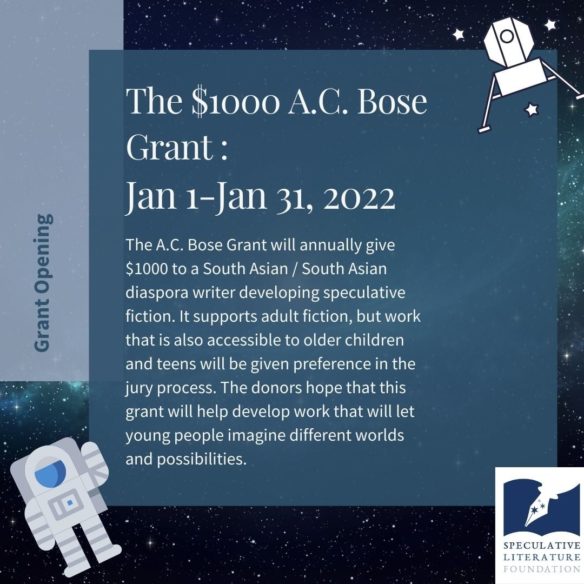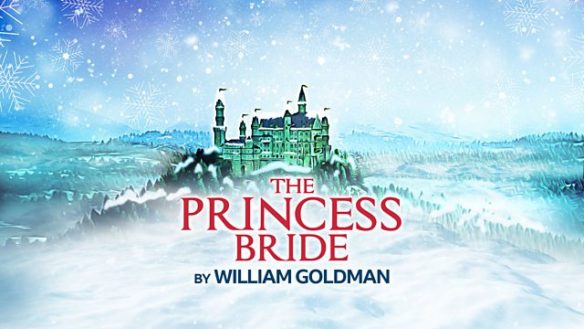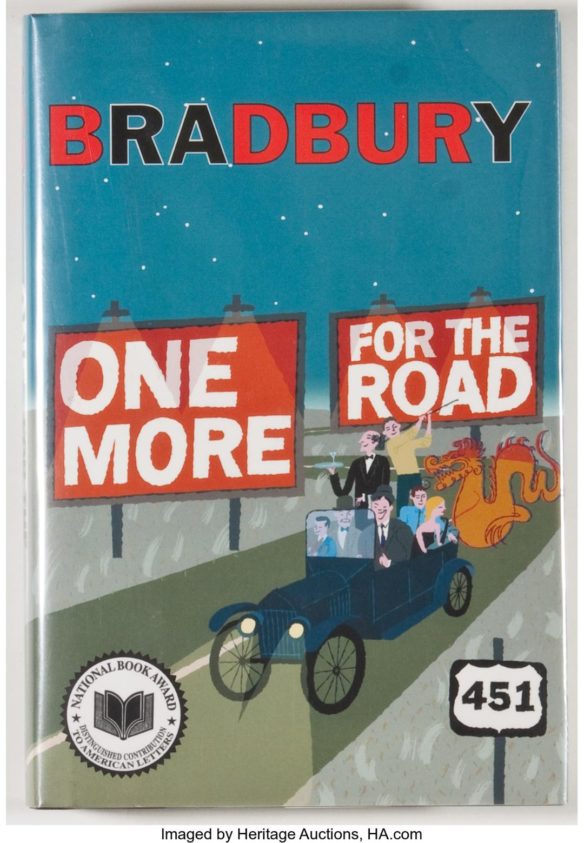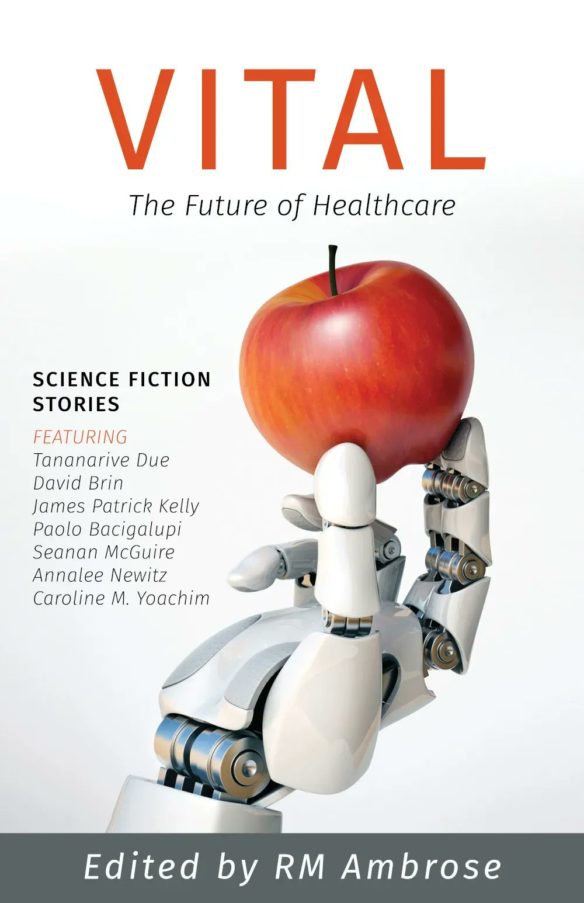(1) PUBLIC DOMAIN IN 2022. James Langdell told Facebook readers what excites him about the arrival of the New Year:
Welcome to 2022! Now everything published in 1926 has entered the public domain in the US. At last I can legally publish my novel where Jay Gatsby and Winnie-The-Pooh solve the murder of Roger Ackroyd.
The Verge greets the new arrivals in more detail in its article “Winnie-the-Pooh and early sound recordings enter public domain”.
A. A. Milne’s Winnie-the-Pooh, Ernest Hemingway’s The Sun Also Rises, and other books, movies, and compositions from 1926 enter into the public domain today in the US. The works are now “free for all to copy, share, and build upon,” according to Duke’s Center for the Study of the Public Domain, which tracks which copyrighted materials will become public each year.
This year, the usual list of books, movies, and compositions comes with a sizable bonus: a trove of around 400,000 early sound recordings. A recent law, the 2018 Music Modernization Act, standardized how early sound recordings are handled under federal copyright law. As part of that, it set today as the date that copyright protections would end for “recordings first published before 1923.”
The recordings include “everything from the advent of sound recording technology all the way through to early jazz and blues,” Jennifer Jenkins, director of Duke’s public domain center, recently told NPR. The recordings include works from Ethel Waters, Mamie Smith, and The Sousa Band, among many others….
(2) SOYLENT GREEN IS FABLE. James Pethokoukis shares all the reasons “Why 2022 won’t be anything like the 2022 of ‘Soylent Green’”.
…So why isn’t 2022 for us going to be anything like the 2022 of Soylent Green? Well, the pessimists back then got a lot wrong.
- They failed to grasp the “demographic transition” when people in rich countries start having fewer kids. The average fertility rate in at least moderately rich countries is now just 1.6, well below replacement. Today’s population-related anxiety is about too few of us, not too many. Oh, and the Big Apple is less than a quarter of the size predicted in the above image from the film’s opening….
(3) APPLY FOR A.C. BOSE GRANT. The Speculative Literature Foundation is taking submissions for the A.C. Bose Grant for South Asian Speculative Literature through January 31.
The SLF and DesiLit are pleased to announce a new co-sponsored grant, founded in memory of Ashim Chandra Bose, known as the A. C. Bose Grant beginning in 2019.
The A.C. Bose Grant will annually give $1000 to a South Asian / South Asian diaspora writer developing speculative fiction. It supports adult fiction, but work that is also accessible to older children and teens will be given preference in the jury process. The donors hope that this grant will help develop work that will let young people imagine different worlds and possibilities.
?The grant is founded in memory of Ashim Chandra Bose. A.C. Bose, a lover of books, and especially science fiction and fantasy, by his children, Rupa Bose and Gautam Bose, in fond memory and to honor the legacy of the worlds he opened up for them.?

(4) YEAR’S BEST COMICS. Find out what made the list of “CBR’s Top 100 Comics of 2021” at the link.
After a short five-year hiatus, we returned this year with a longtime CBR tradition. At the end of the year, we polled the many members of the CBR staff that make this site so great and asked them for their for their rankings of the top comics of the year. Every publisher putting out new comics material in English, regardless of genre or format, was fair game; each individual list was then factored in to determine the overall Top 100 that we unveiled on CBR over the course of this past week….
-DC Comics edged out Marvel 27-26 in entries on the countdown, but what’s staggering to me is HOW the DC titles appeared on the list, as they dominated the top 25 of the list (doubling Marvel up 12 to 6), but when we got to the Top 10, then Marvel edged ahead, taking 4 of the Top 10 to DC’s 3. Of course, going even more narrow, DC had 2 of the top five to Marvel’s 1).
-Image Comics was third on the list with 12 titles, with BOOM! Studios following with five (Dark Horse Comics had three to round out the top five).
(5) HORTON’S NEXT STANZA. Rich Horton is retiring as Locus’ Short Fiction columnist. He says, “The reasons are simple and not controversial (short version: 20 years is a long time, I want more time for other projects and other reading, and, especially, more time to dote on my grandchildren!)” Horton will still be associated with Locus. “I’m not gafiating, and I’ll still be at conventions and writing other stuff.)” He discusses the future at his blog: “Happy New Year: and 2021 Awards Eligibility Post”.
…Also, there is a great personal reason: my grandchildren: Addy is 15 months old today, Gus is two weeks old, and another grandson is due May 31! I’ll certainly be devoting plenty of time to doting on them! (And this is a reminder to me that even when things are depressing in the wider world, there is joy!)…
(6) HORROR UNIVERSITY. “Horror U Courses Begin in January!” The Horror Writers Association is taking signups now. Horror University presents six workshops for horror writers everywhere interested in refining their writing, learning new skills and techniques, or perfecting their manuscript presentation. Register here.
The Winter 2022 Session includes:
- January 10: Building Your Very Own Haunted House: How to Write Effective Ghost Stories with Gwendolyn Kiste.
- January 24: Into the Dark Woods: Incorporate Fairy Tale Symbolism and Archetypes in Your Stories with Carina Bissett.
- January 31: Treacherous Settings: Discover How to Use SETTING to Escalate Conflict, Suspense, and Atmosphere with Michael Arnzen.
- February 7: Manuscript Magic: Practical Strategies for Polishing and Presenting Your Manuscript with Lee Murray and Angela Yuriko Smith.
- February 28: Writing Your Horror Novel in Six Weeks: The Castle of Horror Guide with Jason Henderson.
- March 7: A Writer Prepares: Techniques for Character Development for Fiction Writing with John Palisano.
Registration is $65 for non-HWA-members, $55 for HWA members, and four- and six-course bundles are available.
(7) THE PRINCESS BRIDE & EXTRAS. “First a novel, then a film, now an audio experience.” From BBC Radio 4 — The Best Bits of the Good Parts Version by Stephen Keyworth.

A two-part dramatisation of swashbuckling adventure plus five bitesize backstories which can be enjoyed as stand-alone stories or to enhance your experience of the drama.
The Dramatisation: Part 2 is now available online: “The Princess Bride, The Dramatisation: Part 2
With Westley captured and Buttercup on the cusp of marrying the dastardly Prince Humperdinck, there are only two people in the world who can save the day – Inigo and Fezzik. But one of them is lost and the other is drunk.
And another Bitesize Backstory is also up: “The Henchman”.
Fezzik was a simple, happy giant…until his parents taught him to fight.
The story of how a giant whose favourite sport was making rhymes became the henchman to a master villain.
(8) LIVING SPACE. [Item by Martin Morse Wooster.] In the Financial Times behind a paywall, Mark Ellwood, in a piece about architects designing space habitats, interviews Blue Origin vice president for advanced development programs Brent Sherwood.
Sherwood adds that many of the concepts mooted for interplanetary development aren’t viable–think of the crystalline domes common in set designs from Doctor Who to Space: 1999. The atmospheric pressure of a vacuum forces structures in such locations to act more like high-pressure balloons, he says, and these glorified greenhouses would shatter. Their transparency is also misplaced, as the only way to shield humans from harmful radiation beyond the earth’s atmosphere is via mass.
Moon homes, for example, will need to be shielded by thick walls rather than glass windows. “It doesn’t mean troglodytic living–you can design it so it’s not oppressive. Think about a Gothic cathedral, which is mostly stone but has a but of glass high up in the vaulted space.”
(9) POTTERING ABOUT. In the Washington Post, Travis M. Andrews summarizes all the news in the HBO Max special on the 20th anniversary of Harry Potter, including that many of the adult actors in the films (such as Ralph Fiennes) had little or no familiarity with Harry Potter when they joined the cast. “HBO Max’s Harry Potter reunion: Tears, nostalgia and a curious lack of J.K. Rowling”.
… “I think I’m scarily like my character,” [Rupert] Grint says. [Director Alfonso] Cuarón agrees. He tells a story of giving the actors an assignment to write an essay in character. Grint didn’t do it. “I say, ‘Rupert, where’s your assignment? He says, ‘Well, uh, I thought that Ron wouldn’t do it. So I didn’t do it,’” Cuarón says. “Rupert is Ron. One hundred percent.”
(10) MEMORY LANE.
2002 — [Item by Cat Eldridge.] Twenty years ago, Ray Bradbury wins the Stoker Award for Superior Achievement in a Fiction Collection for his One More for the Road collection. It was published by William Morrow the same year. It contains twenty-six stories by him and an afterword by him. Other authors nominated that year were Stephen King, Nancy A. Collins, Mort Castle and Bentley Little. It was also nominated for a World Fantasy Award and a Locus Award as well. One More for the Road is available from the usual suspects for a very reasonable price.

(11) TODAY’S BIRTHDAYS.
[Compiled by Cat Eldridge.]
- Born January 1, 1854 — James George Frazer. Author of The Golden Bough, the pioneering if deeply flawed look at similarities among magical and religious beliefs globally. He’s genre adjacent at a minimum, and his ideas have certainly been used by SFF writers a lot both affirming and (mostly) critiquing his ideas. (Died 1952.)
- Born January 1, 1889 — Seabury Quinn. Pulp writer now mostly remembered for his tales of Jules de Grandin, the occult detective , which were published in Weird Tales from the Thirties through the Fifties. His Alien Flesh, which is SFF, is the sort of novel that Traci Lords wished she hadn’t done films like it. No, I’m not kidding. (Died 1969.)
- Born January 1, 1926 — Zena Marshall. She’s Miss Taro in Dr. No, the very first Bond film. The Terrornauts in which she’s Sandy Lund would be her last film. (The Terrornauts is based off Murray Leinster‘s The Wailing Asteroid, a screenplay apparently written by John Brunner.) She had one-offs in Danger Man, The Invisible Man and Ghost Squad. She played Giselle in Helter Skelter, a 1949 film where the Third Doctor, Jon Pertwee, played Charles the Second. (Died 2009.)
- Born January 1, 1954 — Midori Snyder, 67. I was most impressed with The Flight of Michael McBride, the Old West meets Irish myth novel of hers and Hannah’s Garden, a creepy tale of the fey and folk music. She won the Mythopoeic Award for The Innamorati which I’ve not read. With Yolen, Snyder co-authored the novel Except the Queen which I do wholeheartedly recommend. (Yolen is one of my dark chocolate recipients.) She’s seems to have been inactive for a decade now. I will say that she has a most brilliant website.
- Born January 1, 1957 — Christopher Moore, 64. One early novel by him, Coyote Blue, is my favorite, but anything by him is always a weirdly entertaining read. I’ve not heard anything about Shakespeare for Squirrels: A Novel, his newest work. Has anyone read it? His only award is a Quill given for the most entertaining or enlightening title for The Stupidest Angel: A Heartwarming Tale of Christmas Terror.
- Born January 1, 1984 — Amara Karan, 37. Though she was Tita in an Eleventh Doctor story, “ The God Complex”, she’s really here for being involved in a Stan Lee project. She was DS Suri Chohan in Stan Lee’s Lucky Man, a British crime drama series which is definitely SFF. Oh and she shows up as Princess Shaista in “Cat Among Pigeons” episode of Agatha Christie’s Poirot but even I would be hard put to call that even close to genre adjacent. I think her last genre role was on The Twilight Zone as Rena in “The Comedian” episode.
(12) COMICS SECTION.
- Grant Snider starts the year at Incidental Comics.
(13) ORGANIZED LABOR. [Item by Olav Rokne.] Strange Horizons’ non-fiction editor Gautam Bhatia’s story Orumai’s Choice tackles the rights of sentient androids to reasonable working conditions. Reads as a thoughtful and positive response to Asimov’s classic robot stories. At Livemint, “Lounge Fiction: Orumai’s Choice by Gautam Bhatia”.
“Eight hours of work, Mr Mayor. Eight hours to dream. And eight hours for what we will.”
Saravanan briefly considered making a bad joke about electric sheep, but thought better of it.”
(14) HOWLING IN DENVER. Meow Wolf opened its third installation in Denver in September and it’s “intergalactic.” “Meow Wolf Launches In Denver, Taking Visitors (Finally) To Convergence Station” reports Colorado Public Radio.
…Step into the lobby of Denver’s strangest new attraction and the adventure begins. Meow Wolf’s Convergence Station offers an interactive galactic experience like few others. It’s essentially a four-story art project mixed with immersive theme park designs and world-building.
From the transit-like lobby, visitors then decide for themselves on which of the four different worlds to travel to.
Do they head to the grimy metropolis of C Street or the calming natural world of Numina? How about the frozen space castle on Eemia or the catacombs of Ossuary? All roads lead to dozens of hidden rooms, intertemporal passageways and many new clues….

(15) SF’S LIGHTNING ROD. Laura Miller discussed “The Cold Equations” in Slate last April – but the article is news to me: “Stowaway: Netflix’s latest hit updates a story sci-fi fans have been arguing over for decades”.
… For some science-fiction fans, “The Cold Equations” became a touchstone of the genre. James Gunn, an author, anthologist, and scholar of the genre, wrote, “If the reader doesn’t understand it or appreciate what it is trying to say about humanity and its relationship to its environment, then that reader isn’t likely to appreciate science fiction.” In this view, science fiction emphasizes the primacy of “the laws of nature, irrevocable and immutable,” over the squishy ambiguities of human emotions and manners, which are the subject of most fiction. The genre is seen by these fans as a sanctuary for those who appreciate hard truths and the men who face up to them.
Behind the technological gloss (much of the story is taken up with discussing the ship and how it works), “The Cold Equations” clearly illustrates the genre’s roots in the Western. Space and the planets settled by the colonist are referred to as the “frontier,” and Marilyn, in her feminine ignorance of the tough conditions there, makes a fatal mistake closely linked to her gender. Like the countless schoolmarms who arrive in semi-lawless Wild West towns in such movies as 1939’s Dodge City, “she belonged in that world of soft winds and a warm sun, music and moonlight and gracious manners, and not on the hard, bleak frontier.” In order to “civilize” the frontier and make it safe for such tender creatures, the male hero must make painful decisions and commit terrible actions that leave him so damaged he’s unsuitable for civilized company.
Although “The Cold Equations” became one of the most anthologized stories in a genre notable for the importance of its anthologies, in recent decades it is far more likely to be criticized than praised. Complaints about the story typically hinge on its contrived premise. Even within the story’s own value system, a mission designed without the redundancy to cope with the unexpected is simply bad engineering, rather than a demonstration of the universe’s indifference. The writer Cory Doctorow declared the story an example of a “moral hazard,” a term that economists use to describe a situation that encourages an economic actor (such as a corporation) to behave unethically by shielding that actor from the consequences of that behavior….
(16) BAH, HUMBUG! In the Washington Post, Will Oremus notes that, despite all the hype, the metaverse does not exist and “what does exist is an idea, an explosion of hype, and a bevy of rival apps and platforms seeking to capitalize on both.” “Facebook’s ‘Horizon Worlds’ isn’t the metaverse. The metaverse doesn’t exist”.
… In the two months since Facebook’s announcement, the term “metaverse” has taken off. A search of the Factiva database finds that it has appeared in more than 12,000 English-languagenews articles in the past two months, after appearing in fewer than 4,000 in the first nine months of 2021 — and fewer than 400 in any prior year. (Not surprisingly, Facebook was by far the most commonly mentioned company in those articles, with nearly 10 times as many appearances as the next most-mentioned firm, Microsoft.) Google Trends, meanwhile, shows that searches for the word have spiked roughly twentyfold since mid-October.
Many of those stories treat the metaverse as if it were a fait accompli — a real thing, like the World Wide Web or social media. After all, the metaverse has to exist in order to get married there, right?…
(17) CROWDFUNDED ANTHOLOGY ARRIVES. Vital: The Future of Healthcare, a collection of short stories featuring the future of health and medicine, was released December 31. Contributing authors include Tananarive Due, David Brin, James Patrick Kelly, Paolo Bacigalupi, Seanan McGuire, Annalee Newitz, Caroline M. Yoachim, Alex Shvartsman, Eric Schwitzgebel, Congyun Gu, Justin C. Key, Sally Wiener Grotta. Congyun (“Mu Ming”) Gu, Julie Novácová, and Lola Robles.

“Vital: The Future of Healthcare” is published by Inlandia Institute, a literary non-profit serving inland Southern California. Paperback and e-Book editions are available now on Amazon, Barnes & Noble, IndieBound, Bookshop, and elsewhere.
Net proceeds will be donated to the United Nations Foundation’s COVID-19 Solidarity Response Fund for the World Health Organization (WHO), a global leader coordinating the worldwide pandemic response.
The idea for “Vital: The Future of Healthcare” was first conceived by RM Ambrose, editor of the book. He saw a need and opportunity to use fictional stories to address real-life challenges during the pandemic and declarations of racism as a public health crisis. “Medical science continues to advance, but for many, healthcare has never been more broken,” says Ambrose. “This book will use the power of storytelling to explore and inspire solutions to the problems that government and even the tech industry have struggled to fix.”
(18) CHEER UP! In the Washington Post, Alexandra Petri looks at all the bad things that didn’t happen in 2021: we didn’t see any ghosts! “Some things that didn’t go wrong in 2021”.
… The ice at the North Pole did not melt and release the Unspeakable, Nameless Thing that has been trapped there for a thousand generations, which did not begin slithering on its hideous belly toward civilization, unhinging the minds of everyone who encountered it and leaving only devastation in its wake….
(19) 2022 IN SPACE. BBC Radio 4’s Inside Science wonders, “A new space age?”
Dr Kevin Fong convenes a panel of astronautical minds to discuss the next decade or two of space exploration.
…2022 promises even more. Most significantly NASA plans to launch the first mission of its Artemis programme. This will be an uncrewed flight of its new deep space vehicle Orion to the Moon, propelled off the Earth by its new giant rocket, the Space Launch System. Artemis is the American space agency’s project to return astronauts to the lunar surface and later establish moon bases. China has a similar ambition.
Are we at the beginning of a new space age and if so, how have we got here? When will we see boots on the Moon again? Could we even see the first people on Mars by the end of this decade? Even in cautious NASA, some are optimistic about this.
Kevin’s three guests are: Dr Mike Barratt, one of NASA’s most senior astronauts and a medical doctor, based at the Johnson Space Center in Houston, Texas; Dr Anita Sengupta, Research Associate Professor in Astronautical Engineering at the University of Southern California; Oliver Morton, Briefings editor at The Economist and the author of ‘Mapping Mars’ and ‘The Moon’
(20) VIDEO OF THE DAY. [Item by Martin Morse Wooster.] In “Honest Game Trailers: Mario Party Superstars,” Fandom Games says this compilation of bits from other Mario Party games is “extra dough from stuff you left in your garage” when the original Mario Party came out in the 1990s but the game is still “the best way to avoid a real conversation at a party.”
[Thanks to Martin Morse Wooster, JJ, John King Tarpinian, Olav Rokne, Hampus Eckerman, Andrew (not Werdna), SF Concatenation’s Jonathan Cowie, Andrew Porter, Michael Toman, and Cat Eldridge, Mike Kennedy for some of these stories. Title credit belongs to File 770 contributing editor of the day Jack Lint.]
